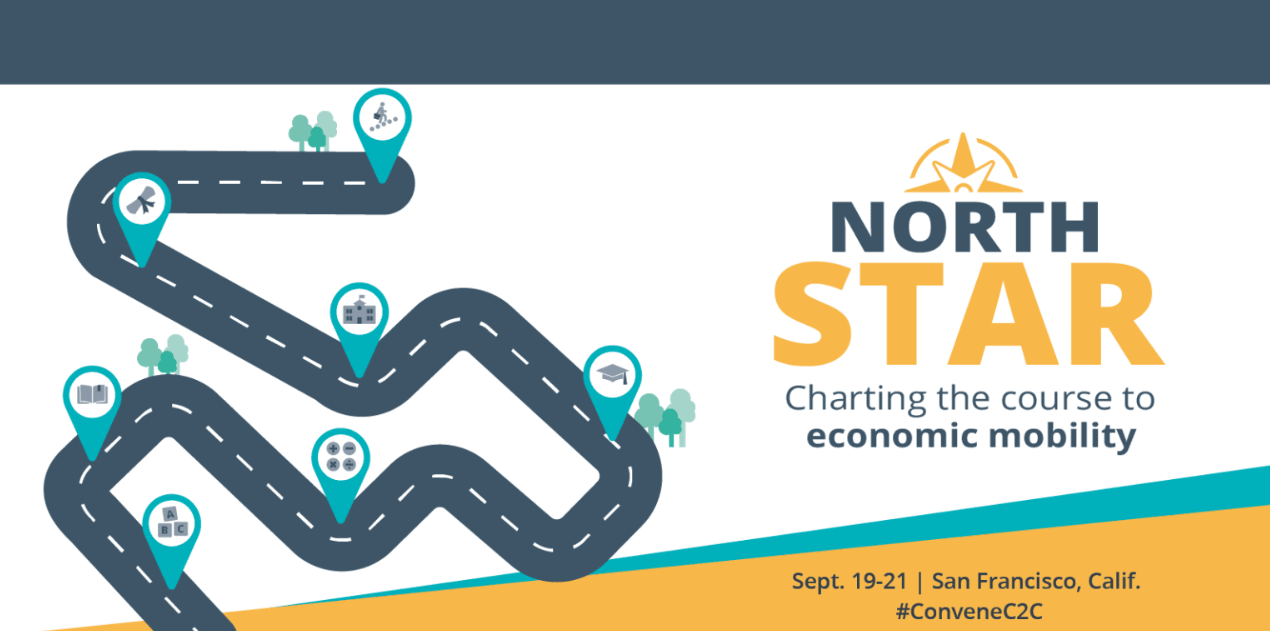Charting the Course to Economic Mobility: Lessons from StriveTogether 2023 Convening

This month, we were excited to attend the 2023 StriveTogether Convening, “North Star: Charting the Course to Economic Mobility.” StriveTogether communities across the nation gathered to share wins, challenges, learnings, and more on how they are addressing cradle-to-career outcomes in their communities. At the convening, StriveTogether announced their bold new strategic goal for the work: putting 4 million more young people on a path to economic mobility by 2030. And as a StriveTogether network member, we are excited to help achieve that goal right here in the Greater Washington region.
The Collaborative Action Networks we support in D.C. and Fairfax put collective impact in action, bringing together cross-sector leaders, community members, and government leaders to craft solutions that address the whole child from cradle to career. We learned so much at the convening and from our fellow national network members that we are eager to bring back to our work. Here are our 4 key takeaways:
- Economic mobility must be our guide: Setting children and youth on a path to economic mobility has been StriveTogether’s goal for over a decade. The economic mobility of the children, youth, and families we serve must guide our strategic decision-making and collaborative action across the cradle-to-career continuum. Young people are the current—and future—community leaders and sources of talent that will keep our region thriving for current and future generations. We left this year’s convening resolved to deepen our partnerships and investments to ensure young people have the resources, supports, and opportunities necessary to lead choice-filled lives that put them on a path to family-sustaining wages right here in the Greater Washington region.
- We must align our work from the local to the national level: Closing the gap between our aspirations for our communities and outcomes for systems change requires aligned action across neighborhoods, local jurisdictions, regions, and the nation. The challenges our local communities face have their deepest roots in policymaking at the national and state level. The consequences of those policy decisions cannot be offset by regional and community partners alone. Nor do the problems our communities face stop at jurisdictional lines. We must come together at every level to craft solutions that will create long-term, sustainable systems change. We look forward to further exploring and advancing the nested systems-change strategies that will improve conditions and outcomes at scale across our region.
- The collective impact road is long, but worth it: At face value, collective impact can be difficult to explain and organize across multifaceted partners. True systems transformation is often achieved at a timescale that is, to be frank, deeply unsatisfying for those of us driven to see and make change. We, our partners, funders, and everyone at the table want to see those outcomes move as soon as possible, want to know we are changing and improving lives. However, systems change is the definition of the long game. Many of our national network partners presented work that was five, seven or even ten years in the making. But witnessing partnerships like the E3 Alliance in Texas build the partnerships, research agenda, data infrastructure and advocacy prowess to pinpoint effective predictors of postsecondary success and build them into statewide policy change reminds us that the long game is worth it and deserves investment and buy-in.
- Children and youth must be center stage: Young people are their own best advocates. They must be centered, prioritized, and valued as powerful leaders in the development of solutions for systems change. As we work collaboratively and draw on our superpowers as adults, we must align our power behind the vision of youth leaders and be willing to make hard pivots when necessary. Eastside Pathways in Washington state taught us about systems-level accountability, where they took findings from rigorous evaluations and research and held them at equal value with local, youth expertise to create a self-evaluation framework to assess the efficacy of social-emotional well-being programs geared toward high-school-aged youth. The evaluation data provides programmatic reflection and is a guiding light for their network to modify systems, build effective safety nets, and create a shared agenda for youth to thrive.
We spent two days being inspired by the incredible work happening in communities across the nation, and by the work of StriveTogether. The convening was also a reminder that the work we do is hard and the road to systems change is long, but we – and all the StriveTogether network members – are committed to creating the systems change necessary to ensure young people can thrive. We are proud to be a member of the StriveTogether national network and work alongside these partnerships to build, sustain, and grow a national civic infrastructure that puts youth, families, and community at the center.
Follow StriveTogether and #ConveneC2C to read more insights from the convening.
Want to stay up to date on collective impact in Greater Washington? Sign up for our newsletter!




